Diving is an exciting activity that opens the door to exploring the underwater world. When you dive into the ocean, you enter a realm entirely different from the land—a world of colorful fish, coral reefs, and diverse marine life. This experience is undoubtedly unique and captivating, but for beginners, diving also comes with its challenges. To ensure safety and fully enjoy the thrill of diving, having the right scuba gear is essential.
For beginners, choosing the right scuba gear can be overwhelming. The equipment must not only fit individual needs but also perform optimally under varying underwater conditions. The right gear will make you feel more comfortable and, more importantly, safer during your dives. In this article, we will introduce all the essential beginner scuba gear must know about. Understanding the function and selection criteria for each piece of equipment will help you explore the underwater world with confidence and security.
Wetsuit/Drysuit
The wetsuit is a crucial part of diving gear, especially when diving in colder waters, as it helps keep you warm. There are two main types of diving suits: wetsuits and drysuits. Wetsuits are typically used in warmer or temperate waters. The principle behind a wetsuit is that it allows a small amount of water to enter the suit, and this thin layer of water is warmed by your body heat, providing insulation. The thickness of a wetsuit is chosen based on the water temperature—thicker wetsuits are needed for colder waters, while thinner ones are suitable for warmer conditions. Choosing the right thickness is essential, as it ensures that your body stays warm while allowing you to move freely underwater.

A drysuit, on the other hand, is completely waterproof and is used in very cold waters, including icy environments like the Arctic. A drysuit does not allow any water to enter, and divers can wear additional thermal layers inside the suit to stay warm in freezing temperatures. For beginners planning to dive in cold waters, a drysuit is a safer and more comfortable option. Though more complex than wetsuits, drysuits provide superior insulation, especially in extreme environments.

Whether choosing a wetsuit or drysuit, selecting the right size and type is critical. A suit should fit snugly but not so tightly that it restricts breathing or movement. Beginners are encouraged to try on suits multiple times to ensure a good fit both in and out of the water. Learning how to properly wear and care for the suit is also an essential skill for novice divers.
Regulator
The regulator is one of the most critical pieces of equipment in scuba diving, as it directly determines whether you can breathe comfortably underwater. Its primary function is to reduce the high-pressure air stored in your scuba tank to a breathable pressure, allowing you to breathe easily while submerged. For beginners, choosing a reliable and user-friendly regulator is essential. A regulator typically consists of two parts: the primary regulator and the secondary regulator (also known as the “octopus” or backup air source).
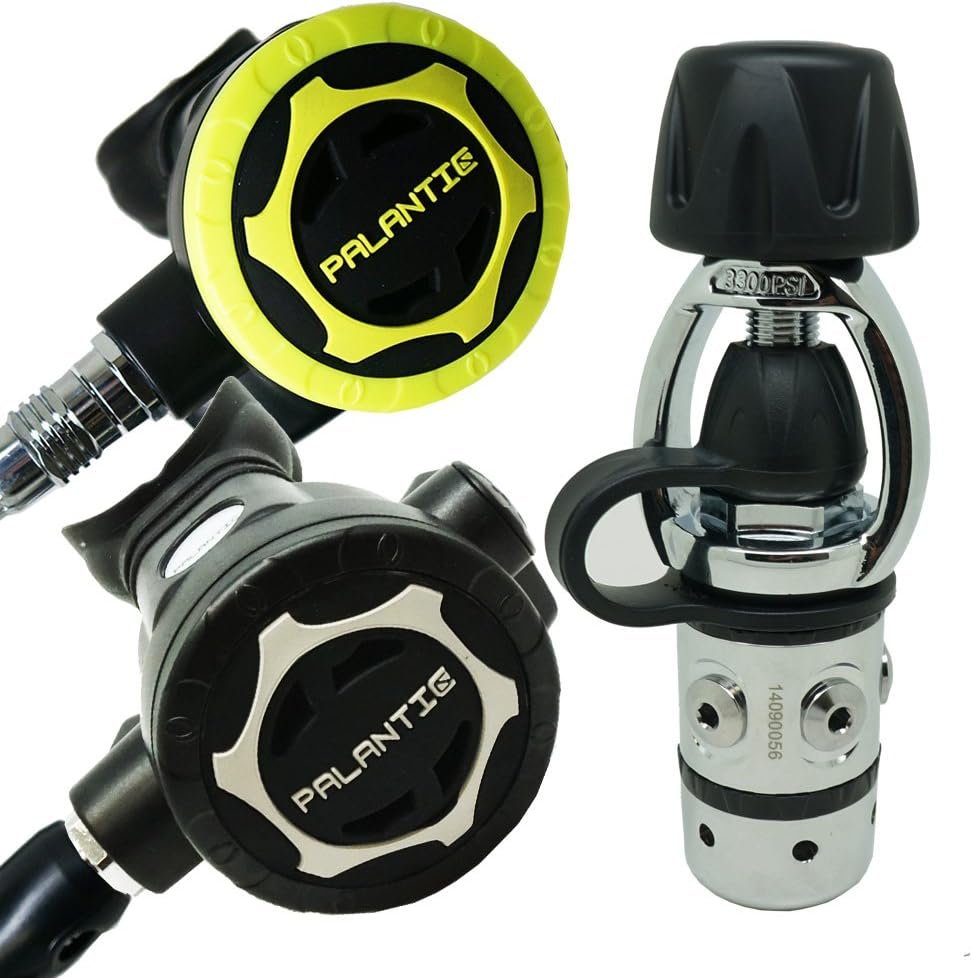
The primary regulator is what you will use most of the time during your dive. It reduces the high-pressure air to a breathable level. A good primary regulator should provide consistent airflow at any depth, ensuring that your air supply is not affected by changes in water pressure or your movement underwater. The secondary regulator serves as a backup in case of emergency, such as a failure of the primary regulator or if your dive buddy needs an air supply. Therefore, the secondary regulator should be easily accessible and highly reliable.
Comfort is another key factor when choosing a regulator. Beginners should select a regulator that fits well in their mouth and is comfortable to use for extended periods. Additionally, factors such as the ease of adjusting the regulator’s flow settings and the resistance to breathing should be considered. A simple, durable, and easy-to-use regulator can greatly improve the diving experience for beginners.
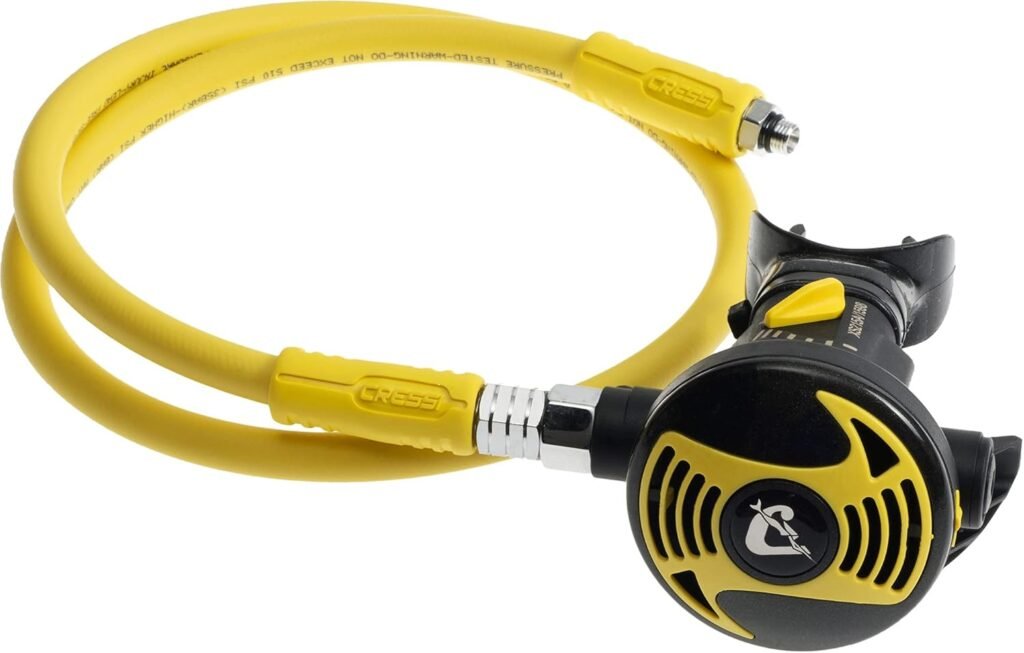
Proper maintenance of the regulator is equally important. After each dive, the regulator should be thoroughly cleaned and dried to prevent the buildup of salt or other minerals that could impair its functionality. Regular professional servicing of the regulator ensures it is in optimal working condition before every dive, which is a habit every diver should adopt.
Scuba Tank/Cylinder
The scuba tank is one of the most indispensable pieces of equipment in diving, as it provides the essential air supply needed while underwater. The tank stores compressed air, not pure oxygen. The composition of this compressed air is similar to what we breathe on land, with approximately 21% oxygen and 78% nitrogen. When choosing a scuba tank, beginners should consider the tank’s capacity, material, and weight, as well as the diving conditions where it will be used.
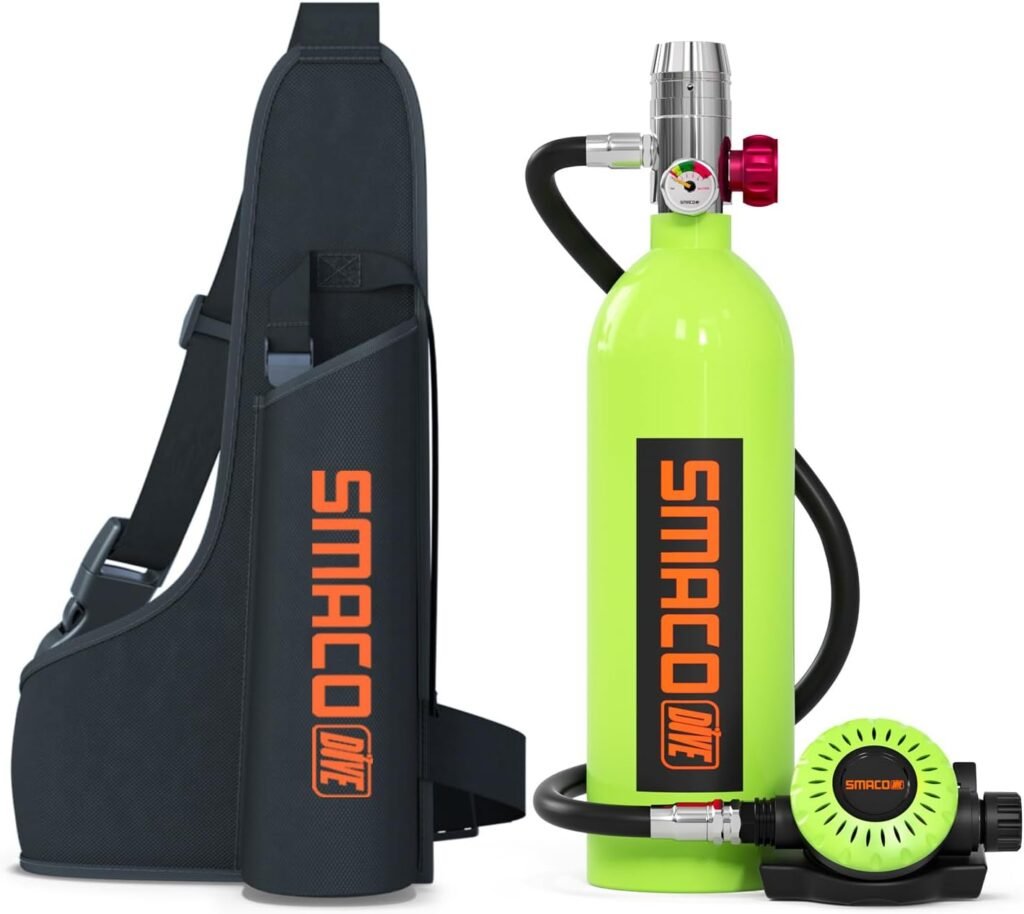
The capacity of a scuba tank is typically measured in liters, with common capacities ranging from 8 liters to 15 liters. The size of the tank you choose depends on the depth of your dive and the duration of your dive. Larger tanks provide enough air for deeper or longer dives, while smaller tanks are more suitable for shallow dives or shorter underwater excursions. For beginners, a medium-sized tank is often the ideal choice, offering a balance between air supply and ease of handling.
Scuba tanks are generally made from either steel or aluminum. Steel tanks are sturdy and durable, and they have favorable buoyancy characteristics, meaning they won’t become overly buoyant when the air is depleted. Aluminum tanks, on the other hand, are lighter but tend to develop more positive buoyancy as the air inside is consumed. Beginners typically choose the material based on the diving conditions and their physical strength.
Read more :Steel Scuba Tanks: The Best Choice for Long-Duration Diving
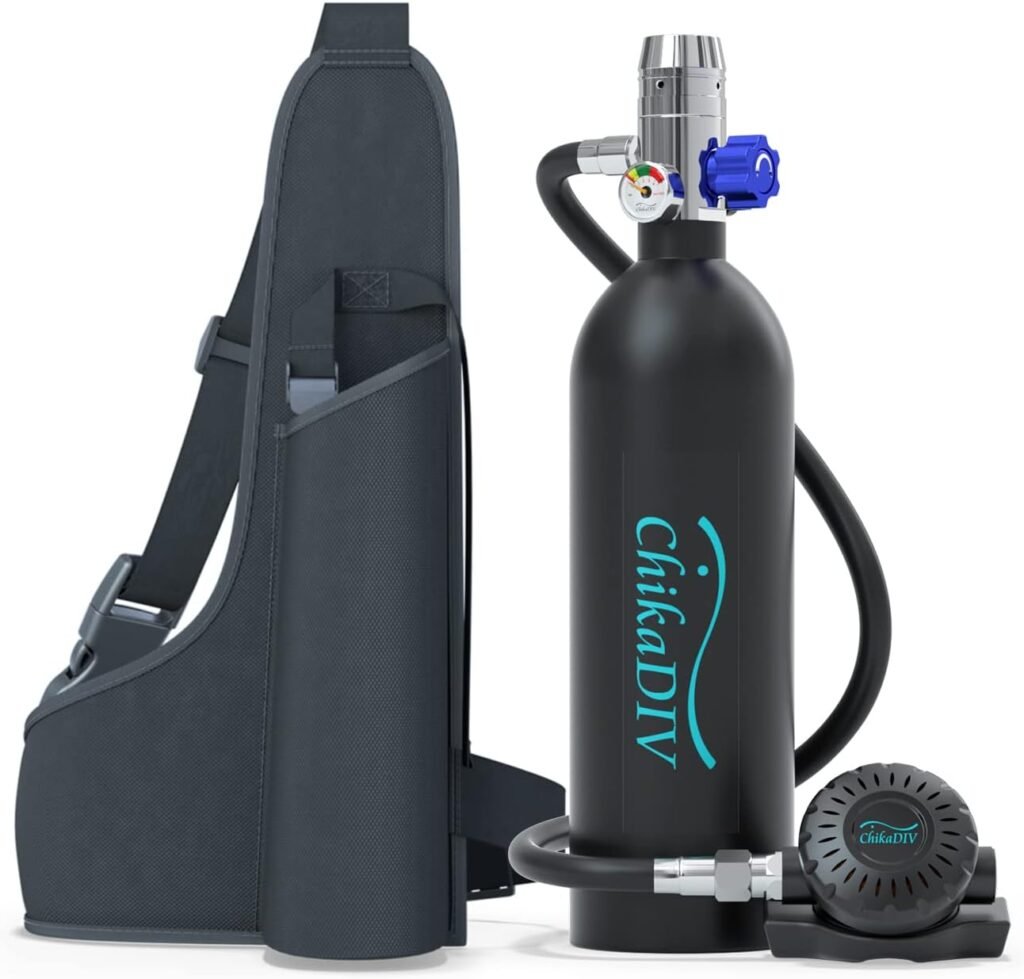
Proper maintenance of the scuba tank is crucial. Before each dive, divers should check the tank’s pressure to ensure it is within the safe range and inspect the tank for any cracks or damage. Regular professional inspections and servicing, usually on an annual basis, are vital to ensure the safety of the tank. The tank’s valve also needs to be lubricated regularly to prevent any malfunction at critical moments.
BCD – Buoyancy Control Device
The Buoyancy Control Device (BCD) is an essential piece of diving equipment, allowing divers to control their buoyancy and maintain stability underwater. The BCD enables divers to ascend, descend, or maintain neutral buoyancy with ease, ensuring that they can move freely at different depths. For beginners, learning how to use a BCD correctly is key to ensuring both safety and an enjoyable diving experience.
The BCD operates by inflating or deflating an internal bladder to adjust buoyancy. When divers need to ascend, they can add air to the BCD, increasing buoyancy. Conversely, when they need to descend, they can release air to reduce buoyancy. Achieving neutral buoyancy—where the diver neither sinks nor floats—is the ideal state for diving, as it allows divers to hover effortlessly in the water, conserving energy and minimizing disturbance to the underwater environment.
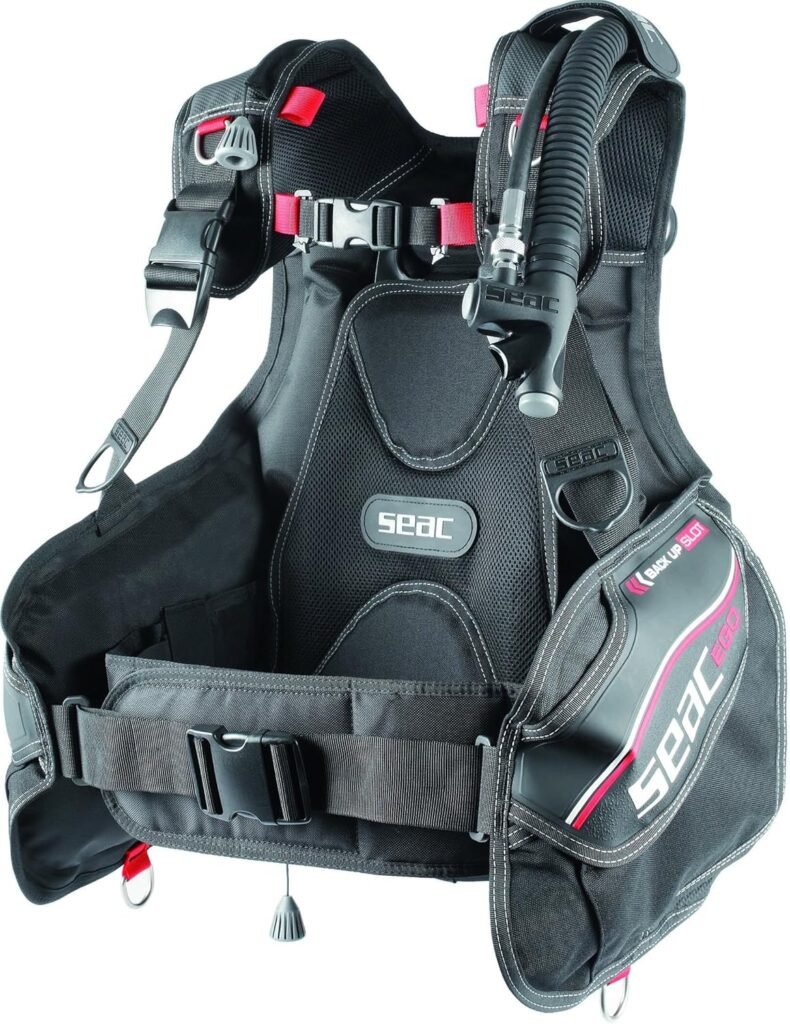
When selecting a BCD, beginners should prioritize comfort and ease of use. There are several types of BCDs, including back-inflation, backplate, and jacket-style. Beginners often prefer the jacket-style BCD because it offers better surface buoyancy support and is easier to put on and take off. Sizing is also crucial; a BCD that is too tight can restrict breathing and movement, while one that is too loose may shift in the water, making buoyancy control more difficult. Choosing a properly fitted BCD enhances both flexibility and comfort while diving.
Additionally, most BCDs come with D-rings and pockets, allowing divers to carry extra gear such as dive lights, dive knives, and more. For beginners, these features help organize gear and simplify the dive experience. When purchasing a BCD, it’s also important to check the quality of the inflator hose and dump valves to ensure they are easy to operate and durable.
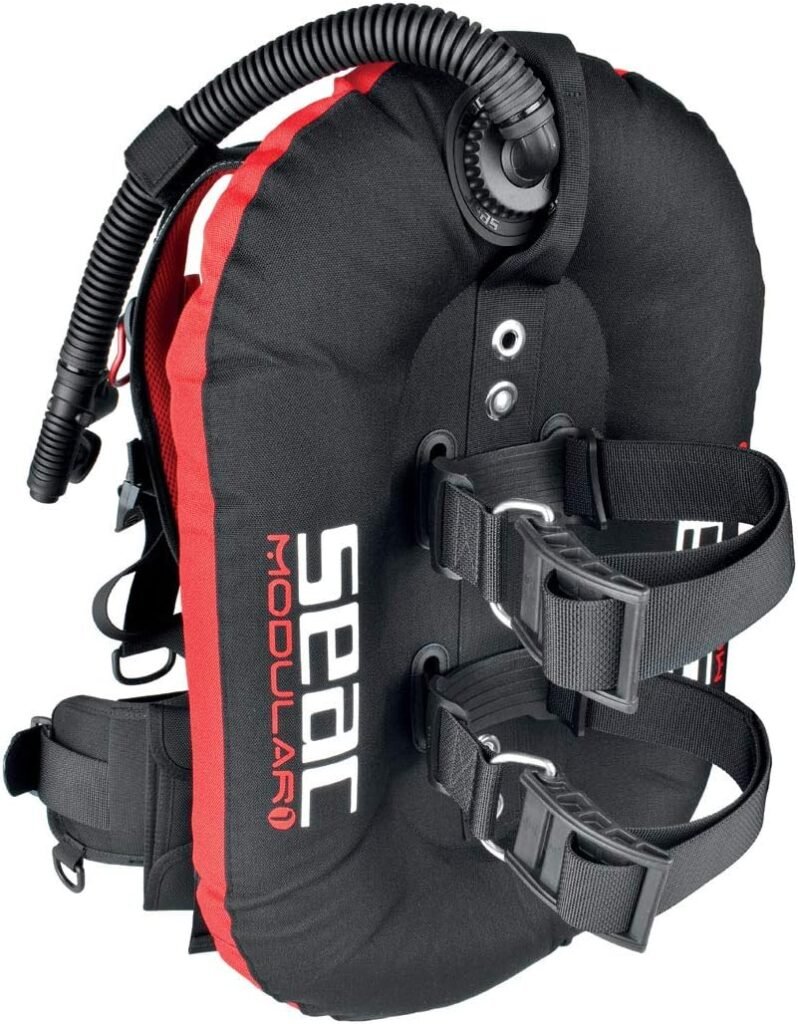
Maintaining the BCD is another important skill for divers. After each dive, the BCD should be thoroughly rinsed, especially the inflator hose and valves, to prevent the buildup of salt and sand, which can affect its performance. Regular professional inspections and maintenance of the BCD are essential to ensure it functions correctly when needed, making it a vital part of every diver’s safety routine.
Mask
The dive mask is one of the most fundamental and important pieces of scuba gear because it provides divers with clear vision underwater while keeping water out of the eyes. Having clear vision is crucial in the underwater environment, not only to enjoy the beauty of the marine world but also to assess the surroundings accurately when carrying out dive tasks or communicating with dive buddies. For beginners, choosing the right dive mask involves considering its fit, comfort, and anti-leak capabilities.
The fit of the mask is one of the most critical factors. A well-fitting mask should form a tight seal around the face to prevent water from leaking in, but it should not be so tight that it causes discomfort. A properly fitted mask helps avoid the need for frequent clearing of water during the dive, which can interrupt the rhythm of the dive. A simple way to test the fit of the mask is to place it on your face without using the straps, inhale slightly through your nose, and see if the mask sticks to your face without falling off—this indicates a good fit.
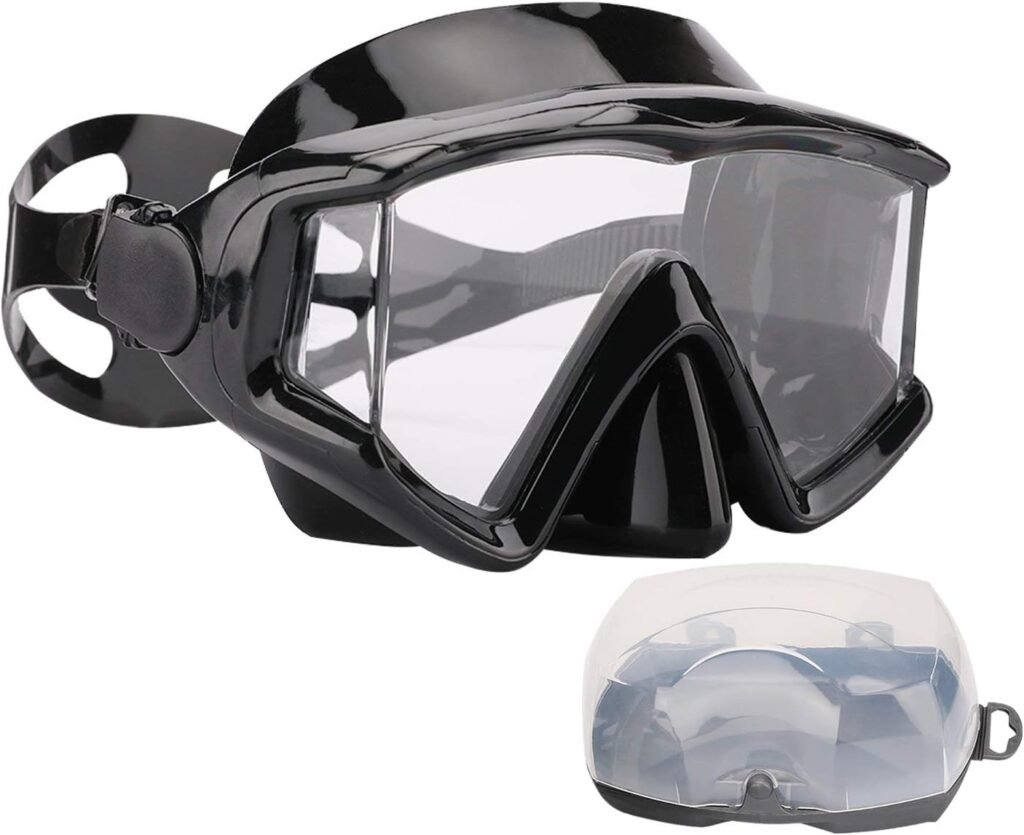
Comfort is another key consideration when selecting a mask. Since beginners may spend long periods wearing the mask during a dive, the silicone skirt around the mask should be soft and comfortable to avoid causing pressure on the face. Additionally, the field of vision is important; choosing a mask with a wide view helps reduce blind spots and enhances safety, giving divers a better sense of their surroundings.
Fogging is a common issue with dive masks, especially for beginners. Many divers experience fogging of the lens during their first dives, which can obstruct vision. To prevent fogging, divers can use an anti-fog solution before the dive, or apply a simple trick—rubbing a small amount of saliva on the inside of the lens and then rinsing it with water, which effectively helps keep the mask clear.
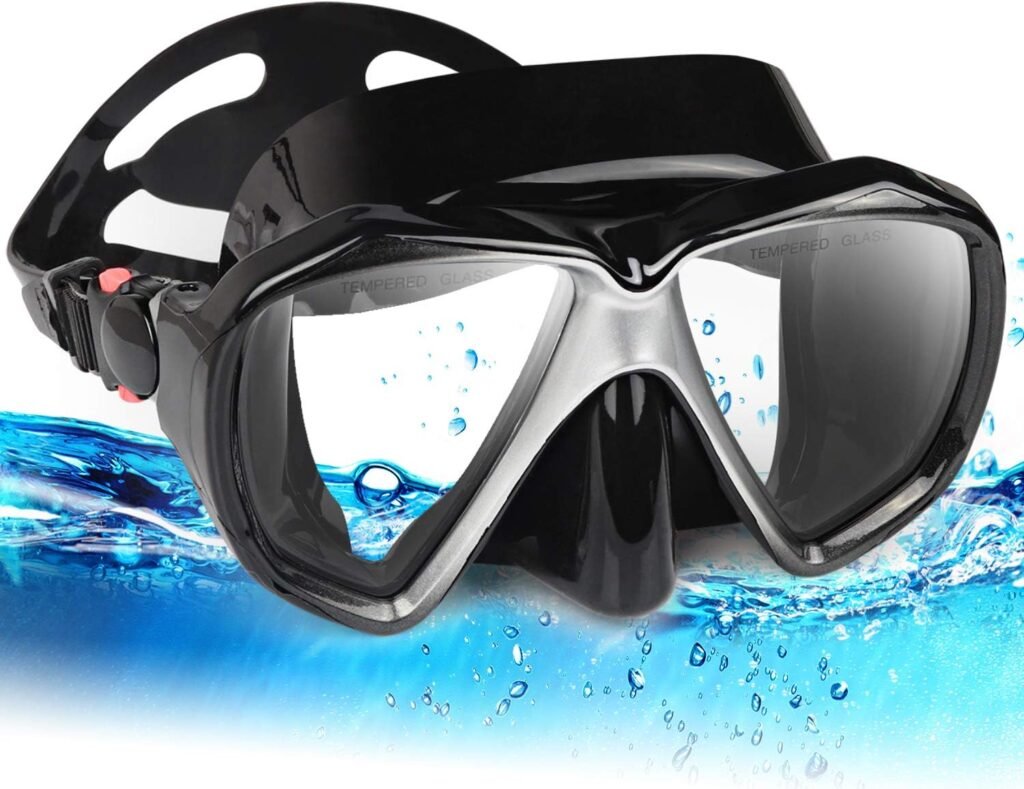
In addition to basic features, many dive masks come equipped with a nose pocket, which assists divers in equalizing pressure during descents. By gently pinching the nose, divers can quickly adjust ear pressure, preventing discomfort or injury. For beginners, learning the technique of equalizing pressure and how to use the mask to assist in this process is crucial for safe diving.
Overall, choosing the right dive mask not only enhances the diving experience but also contributes to safety. Having a clear view underwater helps divers enjoy the beauty of the dive, while also improving their ability to assess the environment and ensure a smooth and safe dive.
Read more:Best Diving Masks for Beginners: Top 5 Picks
Fins
Fins are an essential part of scuba diving gear, enabling divers to move more efficiently in the water. The underwater environment is different from land, with much higher water resistance. Without fins, divers would have to expend significant energy to swim. Fins increase the propulsion force generated by the legs, allowing divers to move more easily and quickly through the water. For beginners, choosing the right pair of fins not only enhances the diving experience but also helps conserve energy, making the dive more enjoyable and safer.
There are two main types of fins: full-foot fins and open-heel fins. Full-foot fins are designed to cover the entire foot and are typically used in warm water environments where dive boots are not necessary. They are lightweight and easy to wear, making them ideal for beginner divers in tropical settings. However, full-foot fins provide less protection in cold water, as they are not compatible with dive boots.
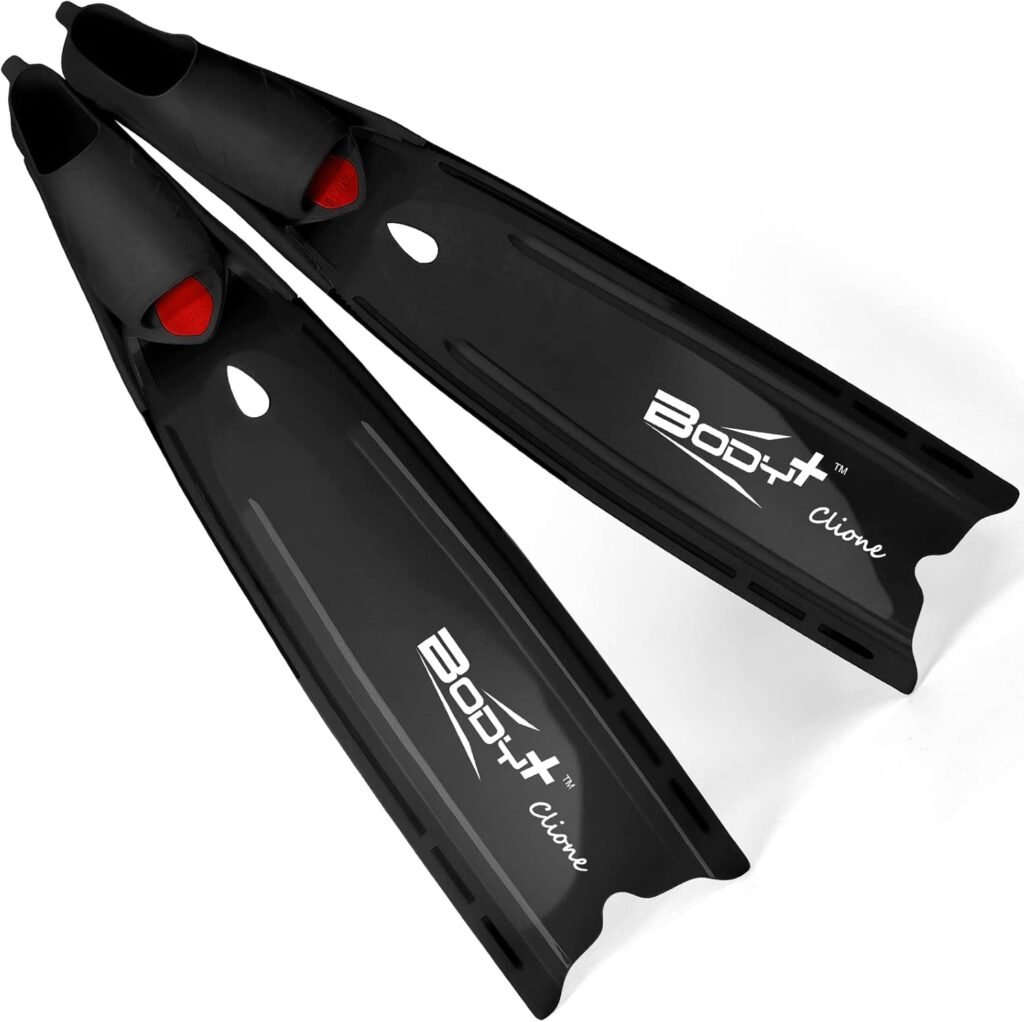
Open-heel fins, on the other hand, leave the heel exposed and are worn with dive boots. They are well-suited for colder waters or more demanding diving environments. Open-heel fins have adjustable straps, allowing for a more customized fit, making them suitable for divers with different foot shapes. Beginners can choose between the two types based on the water conditions and personal comfort preferences.
The stiffness of the fins is another important factor to consider. Stiffer fins offer greater propulsion, but they require more leg strength to use. Softer fins, while providing less power, are easier to control and maneuver. Beginners often opt for softer fins because they are easier to use in the water, reducing leg fatigue, especially during longer dives. Additionally, modern split fins are designed to reduce water resistance, making swimming smoother and less tiring, which can also be a great option for beginners.
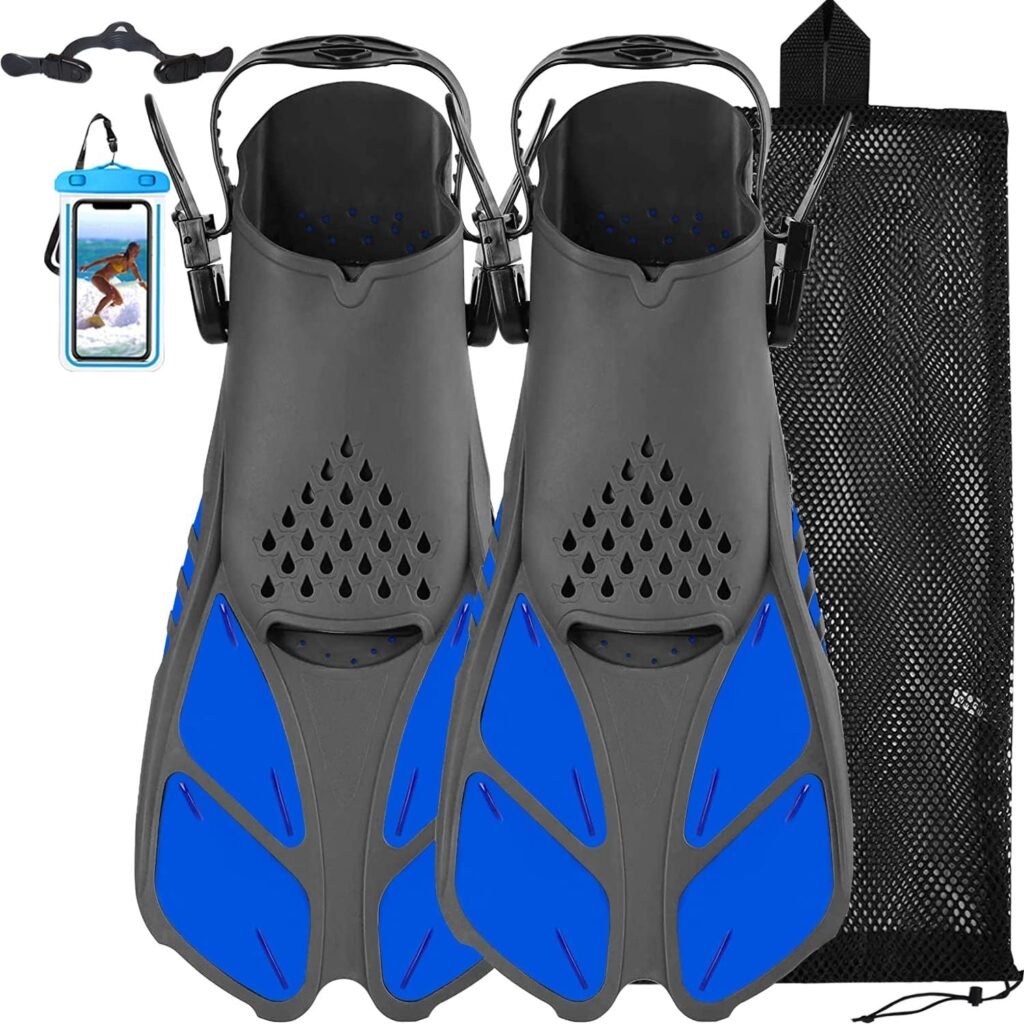
The size and fit of the fins are equally important. Fins that are too large may cause the foot to slide around, reducing the efficiency of power transfer, while fins that are too tight can cause discomfort. Beginners should ensure that the fins fit well with their feet and dive boots, providing a snug but not overly tight fit.
Dive Computer
The dive computer is an indispensable tool for every diver, especially for beginners. It helps monitor critical data during a dive, ensuring safety throughout the process. The primary function of a dive computer is to track a diver’s depth, time, and the amount of nitrogen absorbed by the body during the dive. This information helps divers manage their dive time and avoid decompression sickness. Modern dive computers are designed with user-friendly interfaces, making it easy for beginners to learn and use them effectively.
One of the most important features of a dive computer is the ability to track dive depth and time. Every dive has certain limits in terms of how deep and how long you can stay underwater, and exceeding these limits can be harmful. A dive computer automatically records your current depth and the elapsed dive time, providing real-time recommendations. It will alert you when it’s time to ascend or whether a safety stop is necessary. For beginners, especially when diving in deeper waters or for extended periods, a dive computer offers valuable guidance, ensuring that they remain within safe limits.
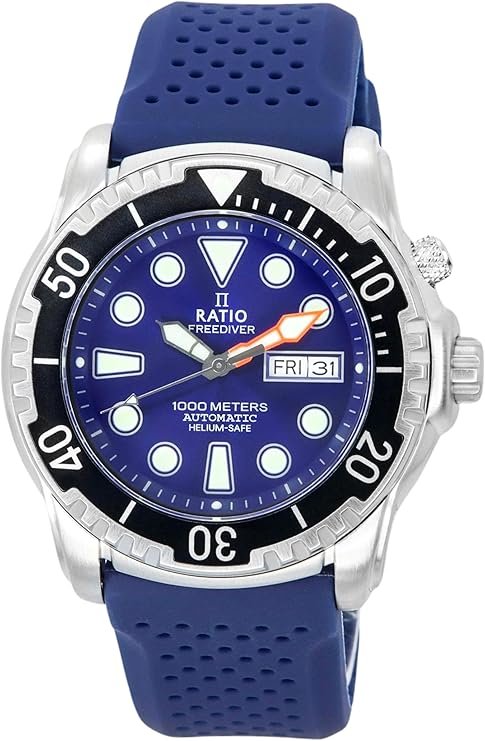
Another crucial feature of the dive computer is calculating the amount of nitrogen absorbed by the body during the dive. Nitrogen enters the body through the air we breathe while diving, and as dive depth and time increase, the amount of nitrogen absorbed also rises. If too much nitrogen accumulates and the diver ascends too quickly without proper decompression stops, they may suffer from decompression sickness. The dive computer calculates how much nitrogen has been absorbed and provides instructions on when to ascend or stop to avoid overexposure. This feature is particularly important for beginners, as they may not yet fully understand the concepts and techniques of decompression.
In addition to these key functions, many modern dive computers allow divers to save their dive logs. These logs include information about dive time, depth, water temperature, and nitrogen levels. This is an invaluable feature for beginners, as it allows them to review their dive history, learn how to improve their diving technique, and gradually enhance their skills. By analyzing their dive data, beginners can gain better insights into their diving behavior and develop safer, more efficient habits over time.
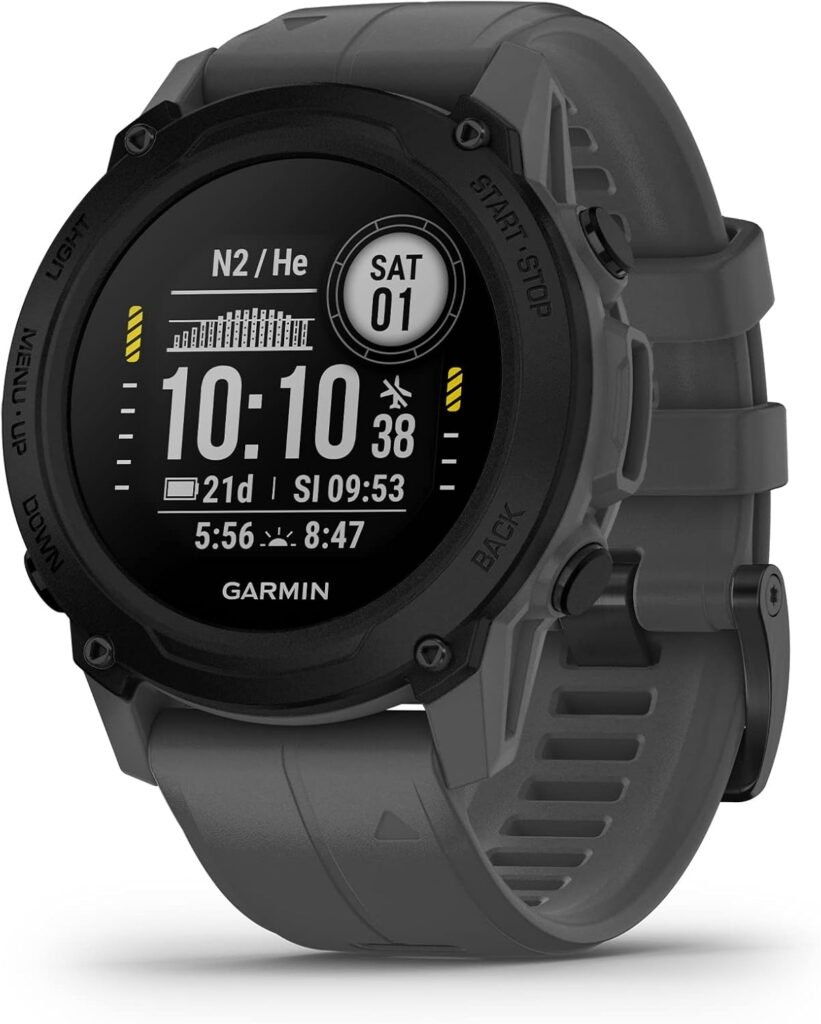
When choosing a dive computer, beginners should consider ease of use, functionality, and price. A dive computer with a clear display and simple operation is the best choice for beginners, as it is easy to read and operate underwater. Advanced features like wireless transmission or heart rate monitoring may be beneficial for experienced divers but are not necessary for beginners. Opting for a dive computer with essential functions but without excessive complexity ensures that beginners can learn and use it without feeling overwhelmed.
Weight Belt
The weight belt is a crucial part of a diver’s equipment, particularly when wearing a wetsuit, as the buoyancy of the wetsuit can make it difficult for divers to descend naturally. The primary function of the weight belt is to add enough weight to counteract the buoyancy of the wetsuit, allowing divers to descend more easily and maintain a stable position underwater. For beginners, learning how to properly use a weight belt is essential to ensuring a safe dive.
Weight belts are typically made of durable materials and are designed to hold lead weights. The number and weight of these lead blocks can be adjusted based on the diver’s body weight, the buoyancy of the wetsuit being worn, and the specific dive environment. Before diving, divers usually conduct buoyancy tests to determine the appropriate amount of weight they need. If the weight is insufficient, the diver may struggle to descend or maintain stability in the water; conversely, if the weight is too heavy, the diver may sink too quickly, making it difficult to control the dive and posing a safety risk. Therefore, finding the correct amount of weight is crucial.
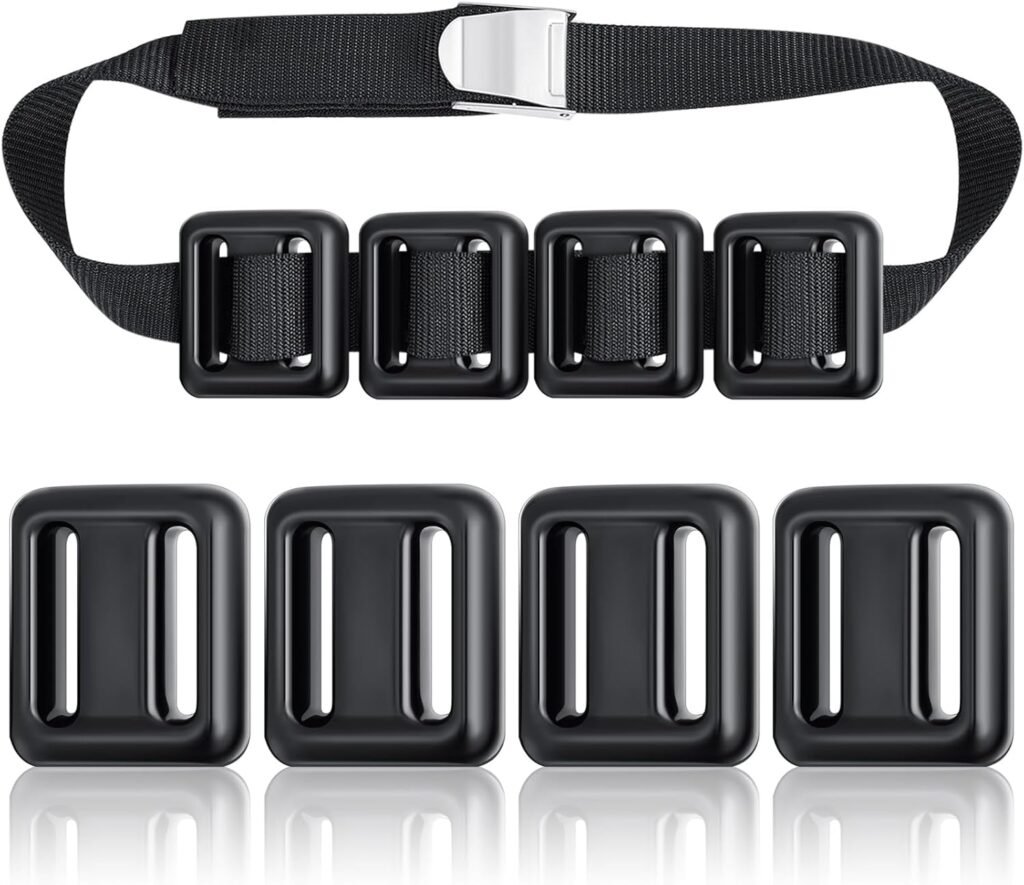
The positioning of the weight belt is also important. It is usually worn around the waist to ensure even distribution of weight. This helps the diver maintain better balance and ensures that the weight does not interfere with mobility underwater. Some divers opt for weight belts equipped with quick-release systems, which allow for rapid removal of the weights in an emergency. This feature is vital in situations where a diver needs to ascend quickly, as it enables them to lighten their load and rise to the surface safely.
As diving equipment has evolved, many modern Buoyancy Control Devices (BCDs) now come with integrated weight systems, eliminating the need for a separate traditional weight belt. These integrated weight pockets are usually located on either side of the BCD, allowing divers to insert lead weights comfortably, making it easier to distribute the weight evenly and ensuring that the diver remains balanced in the water. Integrated weight systems offer greater convenience and comfort, and for beginners, they are often a more intuitive choice.
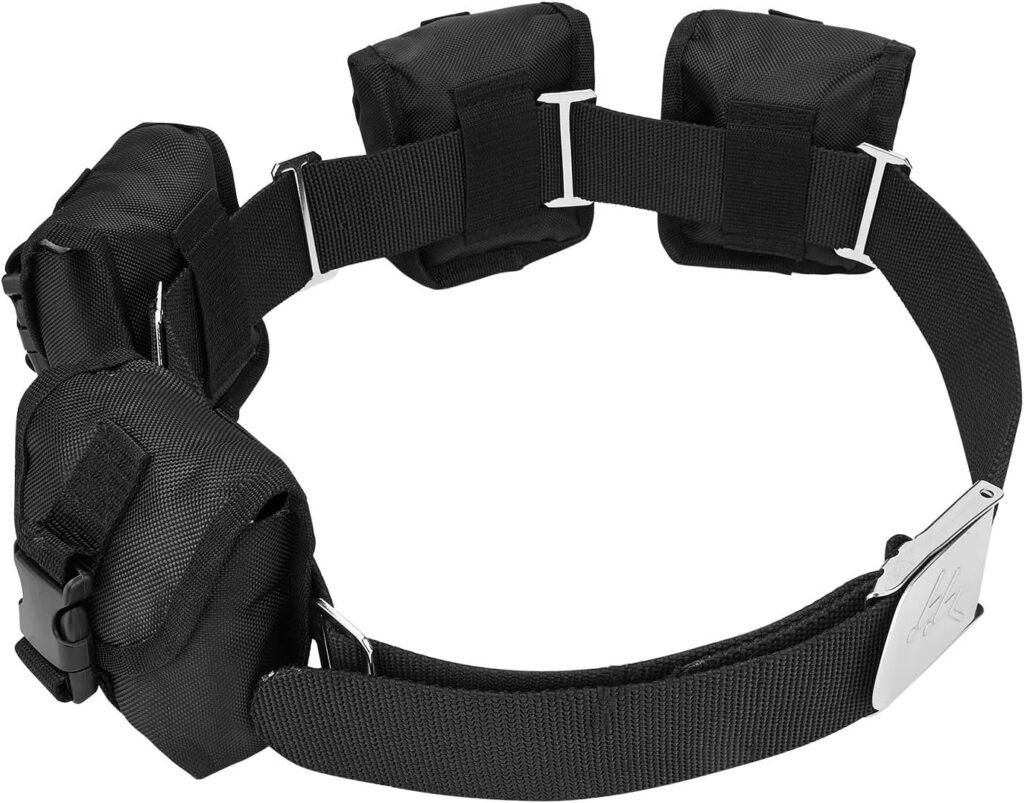
While modern diving equipment has become increasingly advanced, it is still important for beginners to understand how to use and adjust a traditional weight belt. This knowledge not only prepares them for different diving environments but also helps lay a solid foundation during the learning process. Diving instructors typically teach how to select and use a weight belt during initial certification courses, helping students understand the relationship between buoyancy and weighting, and conducting multiple tests before actual dives to ensure optimal performance.
Dive Gauges
Dive gauges are a diver’s “lifeline” underwater, providing real-time critical data that ensures the diver can safely conduct their dive. Typically, dive gauges include a depth gauge, pressure gauge, and compass, and sometimes a thermometer. These gauges can be used individually or integrated into modern dive computers. For beginners, mastering how to use these instruments is vital, as the data they provide is directly related to dive safety.
The depth gauge is one of the most basic but essential dive instruments. It displays the current depth of the diver. During a dive, it is crucial for the diver to constantly be aware of their depth, as different depths come with varying dive time limits. If a diver descends beyond the planned depth, it could accelerate nitrogen buildup in the body, increasing the risk of decompression sickness. The depth gauge helps divers control their dive depth and ensures they do not exceed safe limits. Depth gauges typically show measurements in meters or feet, and more advanced models can record the maximum dive depth, allowing divers to review their dive afterward.
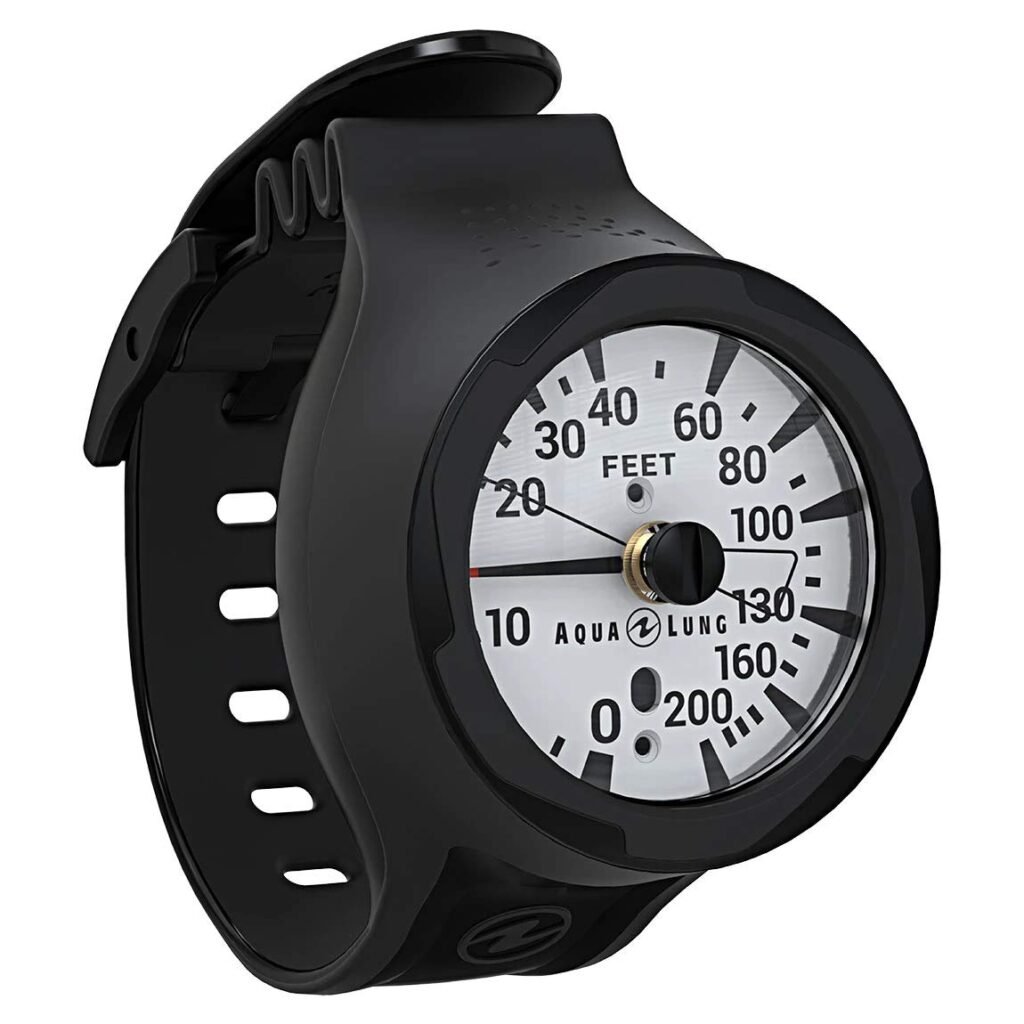
The pressure gauge is another critical tool, as it shows the remaining air pressure in the scuba tank. For beginners, keeping a close eye on the pressure gauge is essential, because running out of air can be life-threatening. Pressure is usually measured in bars or PSI (pounds per square inch), and divers need to regularly check the gauge during the dive to ensure they have enough air to complete the dive and ascend safely. Beginners should also use the pressure gauge data to plan their dive time, ensuring they don’t spend too much time at depth. Understanding how to monitor and plan a dive based on air pressure is an essential skill for new divers.
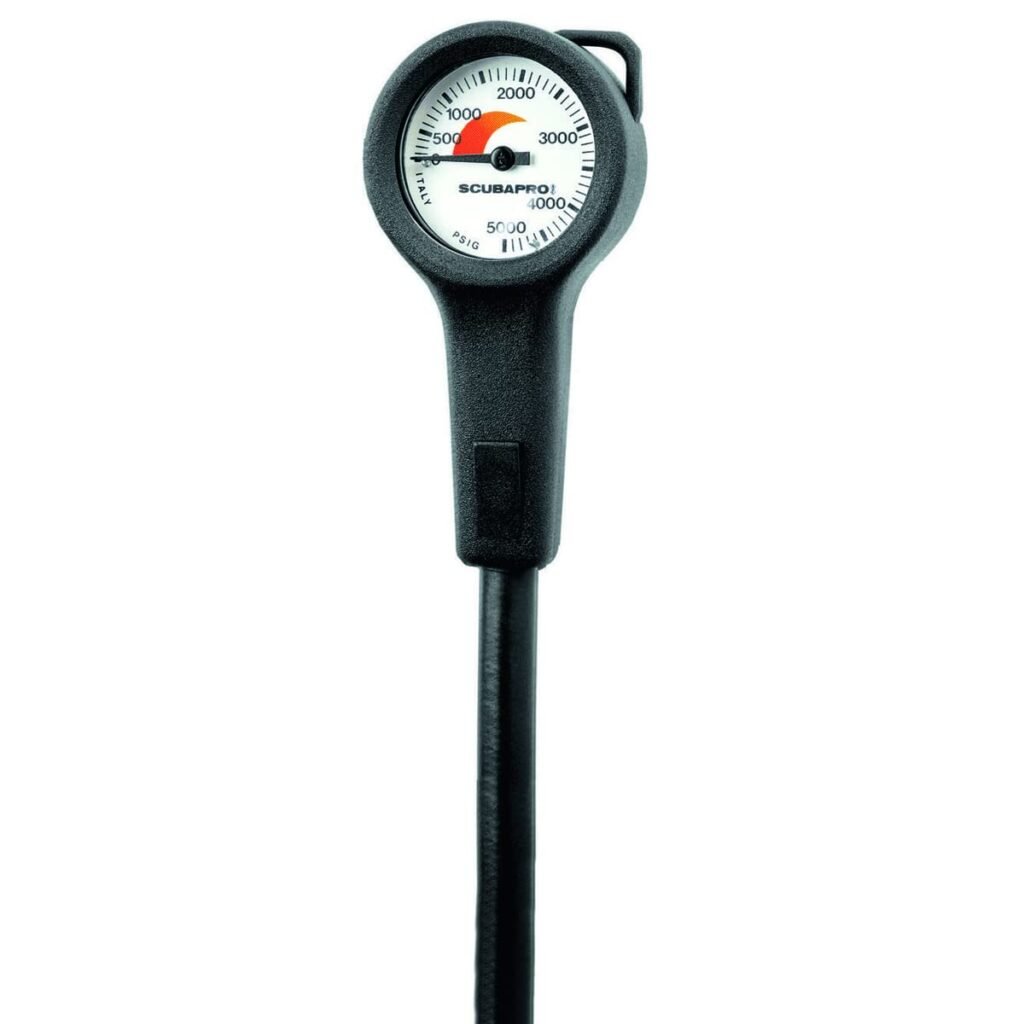
The compass is equally important, particularly in low-visibility conditions or in open-water environments where landmarks and reference points may not be visible. The compass is a diver’s primary tool for maintaining direction underwater. Since underwater navigation is more challenging than on land, especially when visibility is poor, knowing how to use the compass to maintain bearings is crucial. Compasses are often integrated with other gauges for easy access to direction, depth, and remaining air all at once. For beginners, using the compass helps them avoid getting lost in complex underwater environments and helps them manage their distance and positioning relative to their dive buddy.
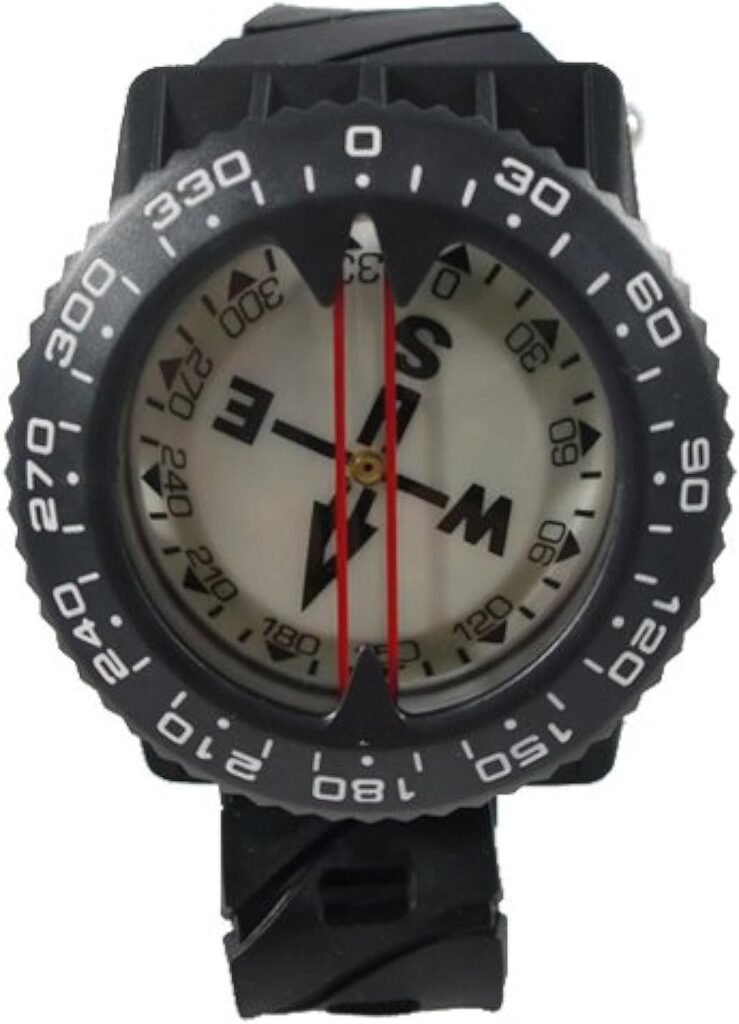
Some dive gauges also include a thermometer, which displays water temperature. While water temperature doesn’t directly affect dive depth or time, knowing the temperature can help divers adjust their gear, such as choosing the right thickness of wetsuit for the dive. For beginners, temperature information can also help them better understand and anticipate changes in the underwater environment.
With the advancement of technology, many divers now prefer using electronic dive computers instead of traditional standalone gauges. Dive computers integrate multiple functions such as depth, pressure, time, and navigation into one device, and can automatically record dive data, providing more precise calculations and warnings. Dive computers can also calculate decompression stop requirements based on the diver’s depth and time, making the dive safer. For beginners, while dive computers are generally easy to use, it is essential to learn how to operate them fully before diving to ensure accurate data readings during the dive.
Dive gauges are essential tools for maintaining safety during a dive. Whether using traditional depth, pressure, and compass gauges or modern dive computers, these instruments provide divers with the necessary information to ensure a smooth and safe dive. Beginners should make a point to learn how to use these gauges correctly and regularly check their condition and functionality to ensure the safety and effectiveness of every dive.
Dive Knife
A dive knife is an important tool in a diver’s equipment, though it may not be frequently used in most situations. However, in an emergency, it can be a life-saving tool. The primary purpose of a dive knife is to help divers free themselves from potential entanglements, such as fishing nets, fishing lines, seaweed, or other underwater obstacles that could restrict their movement. For beginners, learning how to use a dive knife correctly and understanding when to use it is a critical part of ensuring dive safety.
There are many types of dive knives available on the market, varying in size, material, and design. Common dive knives are typically made from stainless steel or titanium. These materials are resistant to rust, especially in saltwater environments. Stainless steel knives are more affordable but require regular maintenance to prevent corrosion. Titanium knives, on the other hand, are more durable and highly resistant to corrosion, though they tend to be more expensive. When choosing a dive knife, beginners should consider their budget, diving environment, and specific needs.

In terms of design, most dive knives are multifunctional. In addition to a sharp cutting edge for slicing, many dive knives feature serrated edges for sawing through tougher materials, such as thick fishing lines or ropes. Some knives even have tools like wrenches or screwdrivers integrated into the blade for performing minor repairs underwater. The tip of the knife also varies in design. Some knives have pointed tips for precise cutting, while others have blunt tips to avoid accidental injury to oneself or a dive buddy while underwater. Beginners can choose the type of blade that best suits their diving needs.
The method of carrying a dive knife is also important. Divers typically secure the knife to their leg, arm, or BCD (Buoyancy Control Device) so that it can be quickly accessed in an emergency. For beginners, the ease of drawing the knife from its sheath is crucial, as in a high-stress situation, quick access is key. A well-designed sheath ensures that the knife won’t fall out during the dive, but it also allows for quick removal when needed.
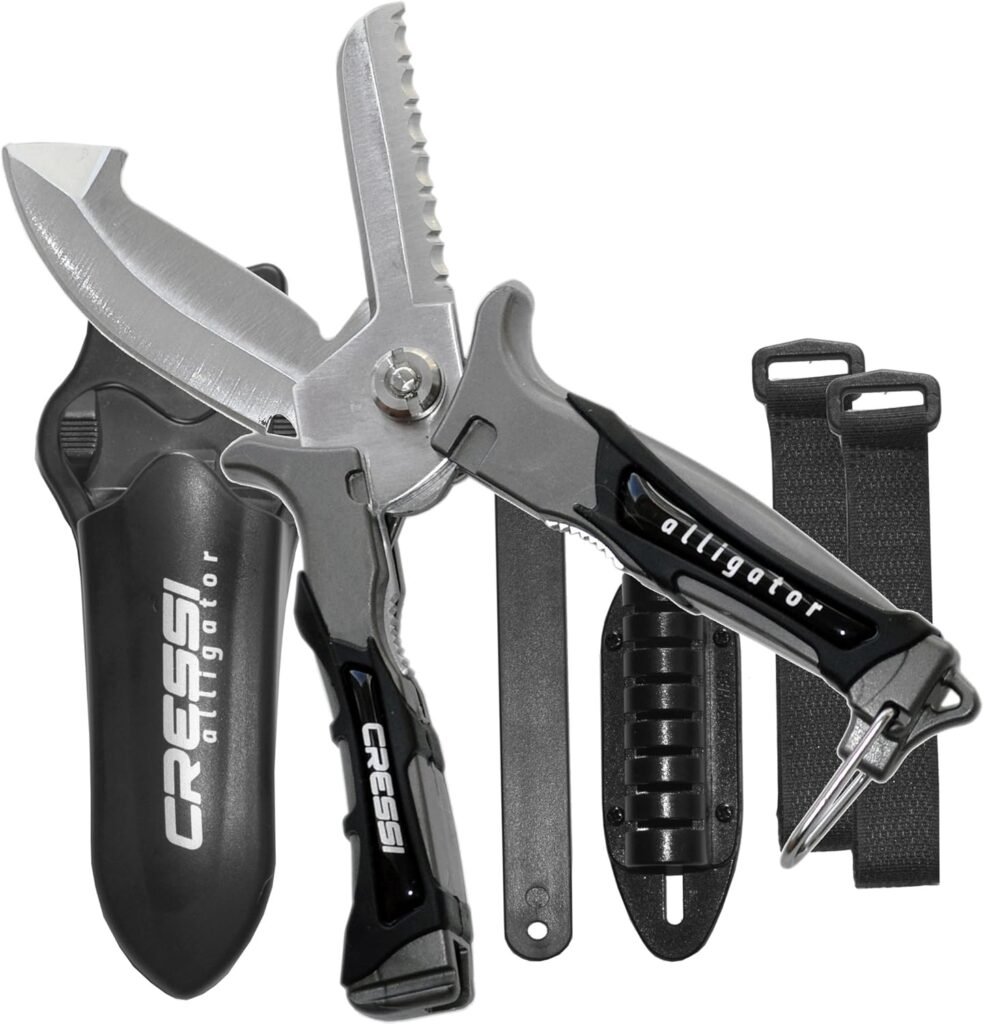
After each dive, it’s also essential to maintain the dive knife. Even though most dive knives are made from corrosion-resistant materials, they should still be thoroughly rinsed with fresh water after every dive to remove any salt residue that could cause rusting or dulling of the blade. Regularly checking the sharpness of the blade and the integrity of the sheath will ensure the knife is in optimal condition for the next dive.
The Conclusion of Beginner Scuba Gear
For each piece of equipment, beginners must not only understand its function but also learn how to use, maintain, and care for it properly. Regular checks and maintenance are essential to ensure that all gear operates at peak performance for every dive, ensuring the diver’s safety. Whether it’s verifying the accuracy of a depth gauge, ensuring the regulator is functioning properly, or keeping the dive knife sharp, these small details can make a critical difference in an emergency.
When selecting gear, divers should also consider their personal needs, the dive environment, and the type of dives they plan to do. Different waters and diving conditions require different equipment. For example, in warm tropical waters, a thin wetsuit may suffice, whereas diving in the cold waters of the Arctic will require a drysuit and heavier weights. The choice of equipment not only affects safety but also directly impacts the quality and comfort of the diving experience.
For beginners, mastering the basic skills and equipment operation is just the first step. As they gain more experience, divers will better understand their preferences, select gear that suits their personal diving style, and improve their ability to use that gear. Learning how to adjust equipment for different diving conditions, how to handle emergencies underwater, and how to collaborate with dive buddies are all essential aspects of becoming a proficient diver.
In summary, diving is a fascinating activity, but ensuring every dive is safe is the top priority. By carefully selecting and properly using the right diving equipment, beginners can significantly reduce potential risks and enhance both the safety and enjoyment of their dives. With experience, divers will grow more confident, enabling them to explore the vastness of the ocean more deeply and enjoy the endless wonders it has to offer. Whether you are just starting your diving journey or already have some experience, choosing the right gear and learning how to use it effectively is the key to a safe and enjoyable diving experience.

